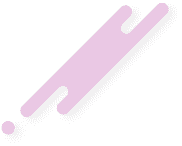The Curious Case of the Evolving Web Design Documentation
When it comes to web design, it’s not just about aesthetics or groundbreaking ideas. One crucial component that shouldn’t be left in the dust is efficient and up-to-date web design documentation. Legible, comprehensive, and current documentation is the silent, steadfast hero of any productive web development project.
Web design documentation has to follow the medium it serves - it needs to be interactive and continuously evolving. A well-maintained design document keeps everyone in the loop and ensures the smooth flow from the design phase to launching the site live, mitigating the chances of a hiccup at the eleventh hour.
Keeping documentation at the forefront of your design process encourages communication between team members, clients, and end-users. Think of it as a dynamic conversation rather than a set of rigid rules. With effective documentation, queries can be quickly and efficiently addressed, potential roadblocks can be spotted ahead of time and, most importantly, everyone is kept on the same page, literally and figuratively.
Digital design documentation, unlike traditional design documentation, needs to be updated continuously to maintain relevance. Remember, a cutting-edge design today may become a relic tomorrow in the rapidly evolving world of web design and development. As such, keep your digital documentation alive by updating it as industry standards change, new design trends emerge, and your clients' requirements evolve.
While the benefits of thorough documentation are many, let's not forget the role it plays in making the final product both user-friendly and accessible. Consequential information about the website's layout, the flow of its various elements and features, and how they fit together can be lost if not appropriately documented. This can lead to user experience disasters and potential accessibility issues down the road.
Furthermore, digital documentation can further be broken down into three categories, namely: system, project, and process documentation. Each has its purpose and plays a critical role in ensuring smooth operations in design ventures.
System documentation includes technical details, such as the site architecture, data models, and the specifics of any APIs being used.
On the other hand, project documentation focuses on the project's parameters—the who, what, where, when, why, and how.
Lastly, process documentation outlines the workflow and lays out the steps to be followed to ensure a successful project.
The absence of any of these three key components in your digital documentation can lead to a domino effect of chaos and confusion, resulting in project delays, budget inflation, and in the worst-case scenario, failure of the project altogether.
In summary, never underestimate the power of well-structured web design documentation. While it may seem like an add-on or an afterthought, it's the secret weapon ensuring a streamlined design process, smooth collaborations, and in the end, the efficient delivery of a successful web design project.
From a Web Designer's View
From a seasoned web designer's perspective, in our Liverpool office, we often joke that documentation is like a cup of Scouse stew – it needs all the right ingredients, stoked over time, for everything to come together perfectly. Jokes aside, the backbone of successful web design and development truly lies in comprehensive, accurate, and up-to-date documentation.
Despite the common misconception that documentation is the mundane side of web design, it provides the framework for creative ideas to flourish and ensures a frictionless workflow from concept to release. If it's a choice between getting lost in the labyrinth of a complex design process or following the roadmap laid out by well-structured documentation, I know which one I’d choose. Maintaining an information-laden, real-time updated documentation has saved us from potential pitfalls more times than I can count.
In an industry defined by constant change, documentation makes sure we're not just keeping up, but staying ahead. It needs to be interactive, evolving and comprehensive, much like the web design field itself. As professionals, we need to foster a culture that values this crucial aspect of the design workflow process to ensure we deliver top-notch design results consistently. After all, nobody wants to indulge in a serving of Scouse stew missing an essential component, do they now?


